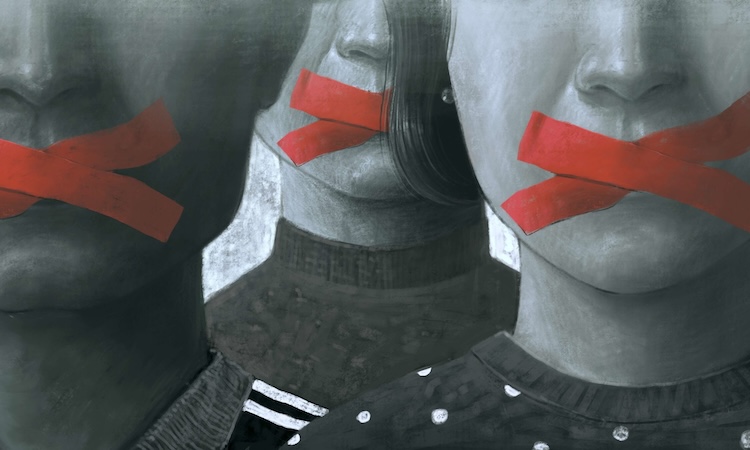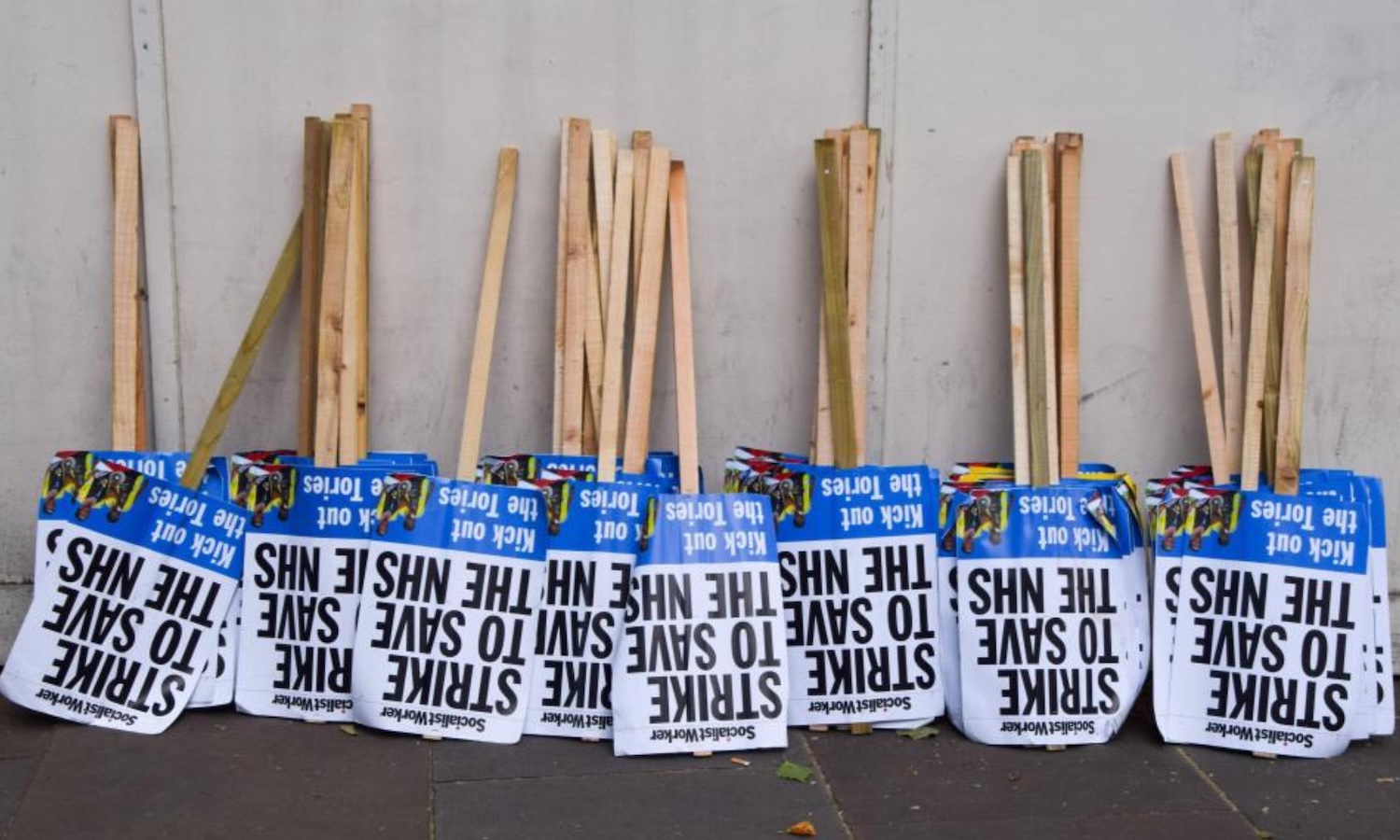For those that have not noticed, there appears to have been a definite increase in police violence against the public, and a wilful, arrogant even, breaking of rules and laws by our ‘guardians of law’, both during the third lockdown and as we are coming out of it.
Anyone wanting to follow this up can view a plethora of filmed examples on YouTube. These examples are for the most part not just films of people discussing what the police may or may not have done or said to them. By and large, they are films of police officers, who are fully aware that they are being filmed, but carrying on acting illegally or trying to convince people that laws exist that patently do not.
Of course, the circulation of such films on social media is not a new phenomenon, but previously they were not reaching the news, since the police historically have generally been protected by the media.
That was until recent events, such as the vigil for young murder victim Sarah Everard in Clapham or the peaceful (until attacked) demonstrations against the proposed new Police bill, when police went into full-on riot mode, not only attacking peaceful protestors – including, in the case of Clapham, women who had been quietly holding hands in small groups and singing – but also waded into journalists and press cameramen.
This being done, they are now learning the lesson that the French gendarmerie learned after they did the same thing: ie, that police crimes are no longer being ignored by much of the press. Now, the videos of police crimes and rule-breaking are being found on the sites of respectable bourgeois news vendors and in the pages of their papers.
Covid as a cover for the crimes and failures of the system
The British establishment took the opportunity that a worldwide virus gave them to beef up their paramilitary forces before workers were allowed back onto the streets in any significant numbers. The Covid-19 epidemic was leapt upon by British imperialism, not only as something to blame for the economic crash that is devastating people’s lives and livelihoods, but as a wonderful chance for them to ‘upgrade’ Britain‘s policing level to ‘neo-draconian’!
We are being told, quite untruthfully, that we must blame a natural illness for the faults and miseries of the capitalist system.
That will not keep people quiet for long, though, as jobs, homes and services disappear in the wreckage of a ‘first-world’ economy that has seen its wealthiest members make unbelievably huge profits from the pandemic. That is why the police and other state bodies are being beefed up and given permission to break the law in order to protect the imperialists’ state from the demands of the many when the excuses of Covid and lockdown are no longer around.
State granting its institutions total impunity
The Covert Human Intelligence Sources (CHIS) Act, which received royal assent in March 2021, explicitly authorises “conduct by officials and agents of the security and intelligence services, law enforcement, and certain other public authorities, which would otherwise constitute criminality”. This means that certain bodies may legally act illegally or allow their agents and officers to act illegally.
The Home Office has assured us, though, that “only” the “intelligence agencies, the National Crime Agency, the police, HM Revenue and Customs, the armed forces, and ten other public authorities will be permitted to authorise criminal conduct under the bill (!)”. It is understood that the Gambling Commission, the Food Standards Agency, the Environmental Agency, and the Department of Health and Social Care are among the ten agencies thus authorised to act illegaly where they deem fit.
This, then, is the context in which the new Policing, Crime, Sentencing and Courts (PCSC) Bill is going through Parliament.
The bill has completed its first and second reading and is at the time of writing entering the committee stage. This will be followed by the report stage and a third reading before it proceeds to the House of Lords for discussion in the upper chamber. Before summer’s end, it will likely do another first, second, committee, report and third reading before reaching the final stages and being sent to the Queen for royal assent.
In essence, the bill covers a whole mish-mash of areas, often with none or only the slightest links between them. The really significant assault contained within its many measures is aimed squarely at workers’ right to demonstrate their dissatisfaction with government, council or even their employers’ policies and decisions.
Moreover, it is an attack aimed at workers’ right to demonstrate effectively!
Right of assembly effectively removed
At present, if the police want to place a ban on a protest, or even place heavy restrictions on it, they generally have to convince the home secretary (officially, at least, a ‘publicly accountable’ person) that it may result in “serious public disorder, serious damage to property, or serious disruption to the life of the community”.
Police forces can and do play a role in allowing and in changing the routes of marches, though certainly in relation to major events, and even many smaller ones, these changes are agreed in discussion with the march/demo organisers some time before the event.
If this bill becomes law, police chiefs will be able to put totally unilateral and non-negotiable conditions on protests, whether they be mobile or static – conditions such as imposing a start and finish time, or setting noise limits that they will measure. If the organisation or even groups and individuals at the protest refuse to follow police directions over how the protest should be conducted, then the organisers could face fines up to £2,500 and individual protesters would face arrest, fine and even imprisonment.
This is, of course, a saboteurs’ charter, since the organisers of a demonstration will even be liable for the actions of participants over whom they may not have the slightest influence or control. Obviously, this will cause people to hesitate to organise demonstrations at all.
It will also be deemed the protester’s responsibility to know every restriction and order of the police, whether these have been made generally known before the protest or decided upon by a senior officer during the protest. Not knowing that any directions had been given by the police will not be accepted as an excuse for not following those instructions.
At the moment, the police still need to prove that a protester not following police directions ‘actually knew’ of the specific police directions that they are being accused of ignoring.
Damage to any memorials could lead to up to ten years in prison, according to measures laid out in the bill, although it is not specified which memorials are included. Do they have to be made of a certain substance? Be of a certain height? Placed in public or private places? Be of a certain person or persons? These, along with all other such questions, will be decided by the police.
The new rules are set to apply to all demonstrations, pickets, rallies and marches, regardless of whether the number of persons involved are two or two million!
The bill also includes a new statutory offence (not only applicable to demos, pickets, marches, etc) of ‘public nuisance’, which provides for a maximum sentence of ten years for anyone the police accuse of acting in a way that, “intentionally or recklessly”, causes “serious harm to the public or puts them at risk of such harm”.
The proposed definition of ‘serious harm’ covers causing persons “serious annoyance, serious inconvenience or serious loss of amenity”. The prospect of criminal convictions and serious jail time being handed down on the open-ended basis of a person’s having caused (or merely having had the potential to cause) ‘annoyance’ in the eyes of a police officer or one of his masters should send a chill down all our spines.
These, then, are the main reasons why people are justifiably angry and turning out in numbers to protest against the bill. The recent scenes of police riot (including the weaponisation of shields, batons, dogs and horses) against protestors in London, Bristol, Manchester and elsewhere offer a graphic illustration of why we must do everything possible to prevent the further ratcheting up of police powers – powers that will clearly be used by police to terrorise protesters and pickets even more than they do at present, and without any vestige of restraint or accountability.
Police brutality and criminality on the increase
Let us now look at just a few of the media outlets that have been showing the police in their true colours, and at the kind of films and stories they have been printing.
The Metro free paper carried the story of a man who had been arrested in Westcliff-on-Sea, Essex, on 20 March. Its website carried a video of an assault on him by police that had been filmed by a passer-by.
In the video, the man is seen standing with officers at the side of a car, who are telling him to lie on the floor. A brief skirmish follows and a policeman says: “I told you you’d get down.” The man who was filming runs around the car shouting: “I can see what you’re doing to him!” while the footage shows a man on the floor with a policeman kneeling on his head!
As the victim tries to move, the policeman quite clearly, and sickeningly audibly, punches him in the top of his head. Essex police have admitted that one of their officers has since been put on ‘restricted duties’ and that an investigation is being carried out by the Independent Office for Police Conduct (IOPC).
Essex police force has been rated as ‘good’ when it comes to treating the public with fairness and respect by Her Majesty’s Inspectorate of Constabulary and Fire and Rescue Services (HMICFRS), the independent body that assesses forces.
Sky TV reported on Wednesday 24 March the existence of CCTV footage that shows a West Midlands police officer attacking a woman who was walking home.
The footage can be viewed on the channel’s website and captures the moment when the off-duty police officer drunkenly assaulted a woman while she walked home at night in Warwickshire. The officer, Oliver Banfield, has since resigned from the force and was sentenced to a 14-week curfew.
On Monday 22 March, Metro UK reported a catalogue of sexual misconduct allegations against Metropolitan police officers, including claims that one had sex with a rape victim and another allegedly assaulted a domestic abuse survivor.
The cases were exposed by the Observer, and followed criticism of the force’s handling of the vigil on Clapham Common for Sarah Everard. Documents obtained under the Freedom of Information Act (FOI) revealed that there had been 594 complaints against the force between 2012 and 2018. Among the 119 upheld was one of an officer fired for allegedly pretending to be a woman online ‘to advance his sexual proclivities and also film a woman apparently having non-consensual sex with a male in a public park’.
Another officer lost his job over claims of a sexual relationship with a domestic abuse victim, and an investigating officer was sacked after a rape victim said he ‘took advantage of her and had sex with her on two occasions’. Sixty-three dismissals, resignations or retirements arose from these 594 complaints.
Other serious allegations included domestic abuse, groping, lewd comments, and a sacked special constable who ‘raped his wife numerous times’. A spokesman for the Metropolitan police said: “While the allegations involve a small percentage of staff, we acknowledge the impact any offence will have on those involved, and will continue to take all allegations of this nature extremely seriously. It is clear this type of conduct has no place within the organisation.”
Siobhan Crawford, a solicitor with Bolt Burden Kemp representing abuse survivors, has pointed out: “For years, abusers in the police have operated safe in the knowledge that they’d be protected by their job.” (Met police officers disciplined over 119 sex abuse claims, Metro, 22 March 2021)
On 24 February 2021, the Metro reported that five Thames Valley police officers are under investigation for manslaughter following the death of a man in their charge.
The victim, 24-year-old Brian Ringrose, was taken to Milton Keynes university hospital by ambulance after he was held on 27 January. An investigation by the police watchdog found evidence to suggest he had been restrained by officers after being medically discharged, and then taken to a police van so he could be transported into custody.
Concerns were raised over his health as he was being taken to the van, and he was returned to hospital, where he was put into an induced coma, the Independent Office for Police Conduct (IOPC) said. Mr Ringrose died in hospital on 2 February and a post-mortem examination found the cause of death to be “inconclusive pending further investigation”.
The IOPC said it was investigating the use of a flexible lift and carry system (Flacs), which was used to transport Mr Ringrose to the van after he had been tied with handcuffs and limb restraints! One of the officers is also being investigated for common assault and all of them have been served with gross misconduct notices for potential breaches of professional behaviour related to use of force and duties and responsibilities.
The Metro reported yet another case on Friday 19 March, this time revealing that Dorset police officer Timothy Brehmer had had his ten-year sentence for manslaughter increased to 13 and a half years. Brehmer killed his lover, Claire Parry, in May 2020 because she informed his wife that they were having an affair.
The Sunday Times carried an article by Camilla Long on 4 April, entitled ‘The police can’t spot a Nazi but they can stop an 82-year-old enjoying her cuppa’. It told the story of police recruit Benjamin Hannam, who is now the first police officer to be convicted of membership of a far-right terror group, although we very much doubt he is alone in this.
In her article, Ms Long asked several pertinent questions: “Why did none of his colleagues at Wood Green station in north London wonder why PC Hannam … kept a picture of himself as Hitler on his phone? Why did no one think, it’s funny how many terrible drawings of Nazis Hannam appears to have on his walls at home. Why did no one wonder what lay behind his interest in Mussolini or ‘the big man’, which is what he called Hitler?”, adding: “Don’t pretend he didn’t mention them.”
She went on to point out that Hannam wasn’t overly secretive about his views: in 2014, he had stated that he was “not a racist — I just don’t like people whose skin is darker than mine”. He had even appeared in recruitment videos for the terrorist group National Action!
Camilla rounded on the police in the most scathing terms: “They can happily manhandle, handcuff and arrest innocent women at vigils, but find it difficult to come anywhere near to arresting or handcuffing any of their own, including another officer, for example, who a compensation board found had ‘non-consensual’ sex, ie, raped, two fellow officers, but is still, we learnt on Friday, scandalously, at work.
“They criminalise innocent beachgoers or issue a warning to an 82-year-old woman for having a non-socially distanced cup of tea, but they can barely be bothered to stop more harmful forms of petty crime, such as burglaries or muggings.”
Meanwhile, on 28 March, the Metro, citing information first uncovered by a Sunday Mirror FOI request in January 2021, reported that “150 serving Metropolitan police officers are convicted criminals!”
Both the Metro and the Sunday Mirror further informed us: “Among the offences registered against Metropolitan police staff are assault, criminal damage, drink driving and theft or fraud.
“Other offences among the group included possession of drugs, public order offences and firearm/ammunition convictions.” These 150 officers are all full-time serving police officers working with the public. The number does not include ‘specials’, police staff or community support officers.
This, then, is a brief and by no means exhaustive look at some of the goings-on among a heavily armed and organised group that our government wishes to hand extreme powers to, ‘for your protection‘!
We have hardly touched on the events at the vigil held for Sarah Everard, the woman for whose murder a serving policeman has been charged. On that occasion, the police went from standing by to attack-dog mode as the hour approached 7.00pm.
Neither have we gone into the case of the arrest of clearly marked legal observers in an anti-police bill demonstration in Bristol. Or that of the demonstrators and one journalist who were attacked and arrested at Folkestone Napier barracks in January, where 400 asylum seekers are being held.
Or the case of the organiser of a protest against the government’s insulting one percent pay offer to NHS staff who has been fined £10,000!
What of the 22-year-old woman grabbed and stripped half-naked by male police officers in Manchester as they dragged her around at a demonstration? That video can be seen on several news websites, where parts of the film have been blurred to protect the young woman’s dignity – far more than the Manchester brutes in uniform thought of doing!
Workers must respond with collective action to overturn unjust laws
Peaceful demonstrators around the country in 2019-20 have been prosecuted and convicted under current laws for doing little more than refusing to leave an area where a demonstration is taking place, or merely sitting down in the road.
There always have been and always will be reasons for people to take to the streets in protest. The police quite liked their powers under the Covid-19 regulations, and this bill must seem to them not only the maintencance of those heavy powers but also their extension.
The Police Federation of England and Wales, a staff association for police constables, has welcomed “important changes granting broader and deeper police powers”. If this particular genie is not forced back into its bottle, the long-held concerns many of us have regarding police accountability over deaths in their custody (1,781 deaths since 1990) are likely to pale into insignificance beside the future case count of crimes committed when the worst of the police’s protected thugs have been let off the leash.
It will be no use looking to official bodies for protection. Many whistleblowers within Her Majesty’s Inspectorate of Constabulary and Fire & Rescue Services (HMICFRS) have come forward to complain that, instead of scrutinising the new bill, the HMICFRS produced a 160-page report totally backing the legistlation – with virtually no consultation and timed to coincide with the publishing of the bill itself.
Our salvation is, and can only be, in our own hands!















